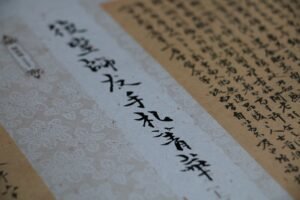Table of Contents
ToggleIntroduction to Chinese Characters
A brief history
Chinese characters have a more than 3,000-year history, which is extensive and rich. There are two primary character sets: simplified and traditional, as a result of the evolution and simplification of these characters over time. Everyone wishing to learn Chinese must know the distinctions between these two systems since they will affect their learning process and communication skills.
The difference between Simplified and Traditional
To increase literacy rates and make the language more approachable, simplified Chinese characters were first adopted in the 1950s. On the other hand, traditional symbols have been used for many years and are still widely used in Hong Kong, Taiwan, and Macau. Their main differences may be found in the two’s visual intricacy and stroke count.
Simplified Chinese Characters
Origin and purpose
As previously indicated, simplified Chinese characters were developed to increase literacy rates and make the language more approachable. They were implemented due to various government-sponsored campaigns designed to speed up writing, simplify the language, and lower the number of strokes required to create each character.
Advantages
For language learners, simplified characters have various benefits, including:
- Fewer strokes make it simpler to learn and write.
- The simplified characters are used more on the Chinese mainland, which is advantageous for individuals doing business or visiting the area.
- They are supported by an excellent selection of educational resources, including books and language-learning apps.
Disadvantages
Simplified Chinese characters have some limitations, such as:
- The use outside mainland China is limited, particularly in areas where traditional characters are still widely used.
- Reading and looking at traditional characters could be perplexing because some are more complicated with more strokes.
- The perceived loss of aesthetic value and cultural legacy resulted from simplification.

Traditional Chinese Characters
Origin and purpose
Before the adoption of simplified characters, traditional Chinese characters were the predominant writing system. They have a more important cultural and historical value despite being more complicated and frequently requiring more writing strokes.
Advantages
The advantages of learning traditional Chinese characters include the following:
- A better knowledge of Chinese history and culture.
- Easier transition to other Chinese dialects that frequently employ traditional characters, such as Cantonese or Taiwanese.
- A greater understanding of the beauty and artistry of Chinese calligraphy.
Disadvantages
Some disadvantages of traditional Chinese characters are:
- The characters’ complexity results in a longer learning curve.
- Simplified characters are more widely used on The mainland, where their use is limited.
- Less educational materials than those for characters in Simplified.
Which one should you learn?
Assessing your goals
Your interests and ambitions ultimately determine whether you study simplified or traditional Chinese characters. Consider your motivations for learning the language, your desired travel or business destinations, and your Chinese history and culture interests.
Language learning resources
The availability of learning resources should be taken into consideration while deciding which character set to learn. Online resources, better language program support, and more study materials are frequently available for simplified characters. Traditional character resources are still widely available, especially for students interested in Taiwanese or Hong Kong culture.
Geographic and cultural considerations
Geographically, mainland China uses simplified characters more frequently than Hong Kong, Taiwan, and Macau, which use traditional characters more regularly. It makes sense to study the character set that is most commonly used in that area if you intend to reside, work, or visit. Also, learning Traditional characters could be more satisfying if you are interested in Chinese history, art, or calligraphy.
Conclusion
In conclusion, your objectives, hobbies, and regional preferences will determine whether you use traditional or simplified Chinese characters. While conventional characters offer a more profound link to Chinese culture and history, simplified characters provide a more approachable learning experience. Whatever nature makes you decide on, prepare for a challenging but rewarding path through language study.
FAQ Section
Can I learn both Simplified and Traditional Chinese characters?
Indeed, a lot of language students opt to master both character sets. While there are frequent parallels between comparable characters, studying the other is much simpler after you have a strong basis in the first.
Which character set is more challenging to learn?
Due to their complexity and higher stroke count, traditional characters are typically thought to be more challenging. The degree of difficulty will also vary depending on the individual, such as past knowledge of Chinese or preferred learning methods.
Will learning one character set limit my ability to communicate with speakers of the other?
Even though the two character sets differ, many Chinese speakers are conversant with both traditional and simplified characters. You can speak effectively even if you know one location, but knowing both groups well will improve your communication skills.
How can I decide which character set to learn?
Consider your trip or business destinations, learning objectives, and particular Chinese history and cultural interests. Consider the accessibility of learning resources for each character set as well.
Click here to REGISTER for our SUMMER CAMP in 2023!
Learn about our Internship Program in China.
Learn about holidays in China in 2023.
Get free Chinese learning resources.







